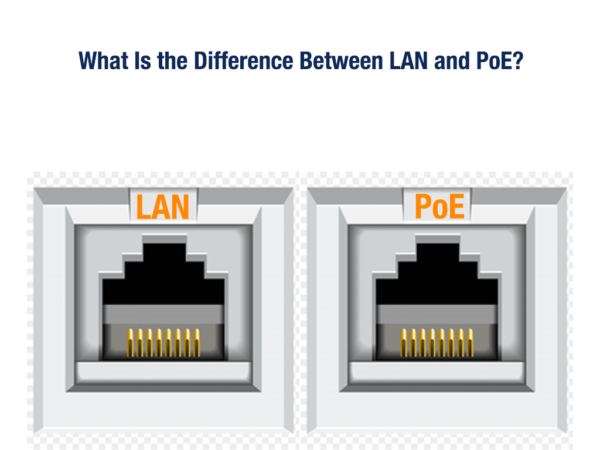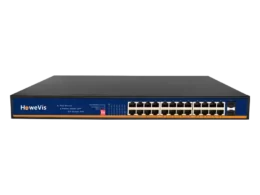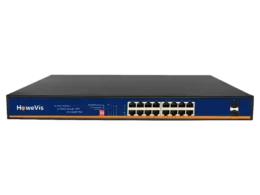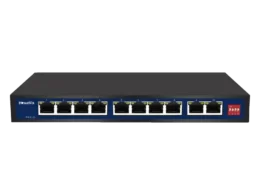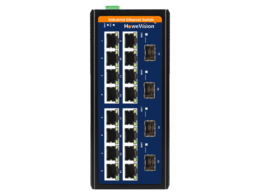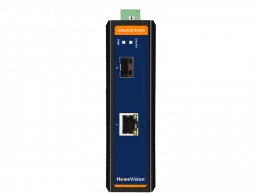PoE and LAN are two separate terms that we use for different purposes in networking. In this post, we will examine the differences between these two terms.
Technology is used to execute wired Ethernet LANs (Local Area Networks). It lets Ethernet data cables carry the electrical current to operate every device. This technology is nothing but the Power over Ethernet (PoE).
That’s the main difference between LAN and PoE. With PoE, you don’t have to rely on an outlet or adapter to power your devices. In short, PoE lets you create LAN without much effort.
Have you been wondering about the differences between LAN and PoE? That is probably why you are looking into this post.
My post today seeks to clarify this confusion. It will help you understand LAN and PoE and their differences.
What Is a LAN?
A local area network is a group of devices connected in a specific physical location, such as a home or office.
You can find a large or small LAN. It could also vary in terms of users.
You may have a home network used by one person. Likewise, there may also be an enterprise network used by many users. It can have many connected devices, like in a school or office.
What Is PoE?
Power over Ethernet is a technique for delivering DC power to gadgets. Of course, it passes through Ethernet cables.
Thus, PoE means you don’t have to use separate outlets and power supplies. It also adds data transfer capabilities.
What Are the Main Differences Between LAN and PoE?
LAN and PoE are different in various ways. These include:
Types
LAN Types
LAN comes in two types, that is:
Client LANs
A client LAN is nothing but a Server LAN. It consists of various devices (clients).
We connect these devices to a central server, which manages device access, file storage, network traffic, and application access.
Thus, any connected devices accessing the internet or applications can be clients. The clients can connect to the central server via cables or wireless connections.
You can keep suites of applications on a LAN server. Users can use applications running on this server.
It allows them to access document sharing, databases, printing, email, and other services.
An IT administrator or network operator can maintain read and write access. This type of LAN is used by most education, government, and extensive business networks.
Peer-to-peer LANs
Likewise, a peer-to-peer LAN lacks a central server. It is minor and incapable of handling heavy workloads like the client LAN. Every device plays an equal part in the network’s functioning on this LAN.
Devices can use wireless or wired connections to share data and resources to a router or switch. Many home networks are usually peer-to-peer.
PoE Types:
PoE comes in four types. Note that I will talk about the types. If you want to read standard-specific details, check them out in my previous post. So, the classes I want to discuss today include the following.
PoE Type 1
It is also called 2-pair PoE or PoE. Moreover, it connects various lower-powered device types to a network using two pairs.
It can supply 12.95W of power to each device and 15.4W of DC power to every PoE port. Besides, it supports VoIP phones, wireless access points, and static surveillance cameras.
PoE Type 2
It also uses 2-pair PoE, which is based on the IEEE 802.3at or PoE+ Ethernet standard. It can deliver up to 30W and 25.5W to every device at the port level. This PoE connects higher-powered gadgets or devices.
It can be used to connect alarm systems, PTZ cameras, and video IP phones to a network.
PoE Type 3
It is also called PoE++ or 4-Pair PoE. It delivers power to PD using all four pairs of twisted copper cables.
Moreover, it can provide up to 51W to every device and 60W to every port. It supports video conferencing equipment, PTZ cameras, and building management devices.
PoE Type 4
It is also called Higher-Power PoE. Its capabilities are of the highest power. As you know, the power requirements of IoT and network devices keep growing. So, this PoE type can meet those demands.
It provides power of up to 70W to every device at the PD and 90W from the PSE.
In short, it delivers power in large quantities. Thus, the PoE Type 4 can suit power-hungry devices like flat screens and laptops.
Advantages
There are also differences between LAN and PoE in terms of their advantages.
LAN Advantages:
- Resource Sharing:
LAN makes it easy to share resources, including printers, DVD drives, and hard disk drives.
- Convenient Communication:
Using LAN, you can exchange data and messages with other users. LAN users can access the data anytime because it is available on the server.
- Improved Security:
LAN ensures data security by placing it on a local server. Should the data on this server be updated, every LAN user can access it.
- Computer Identification:
One can use a Mac address to assign every computer on the LAN for identification purposes. When sending or receiving data, this address is usually used.
PoE Advantages:
- Time and Cost Savings:
PoE saves both time and money. You do not need a professional electrician to install network cables.
Every installed device requires fewer power outlets, which reduces energy costs as it allows for centralized control.
- Safety:
PoE protects network equipment from incorrect installation, overload, and underpowering. It also eliminates the danger of using high-voltage sources of power.
- Reliability:
PoE is reliable as its power comes from a universally compatible central source. One can also use UPS as a backup power source. It allows operations to continue amid power failures.
- Scalability
PoE allows users to install and distribute network connections with ease.
You will get a complete list of PoE advantages in my previous post.
Work Mechanism
Working of LAN
LANs use a router to connect to the internet. A single router is mainly used in home LANs. But larger spaces need you to have network switches.
Working of PoE
In PoE, ethernet cables carry data and electrical current. You don’t need separate wires to send them simultaneously. If a device does not have a PoE, it can only receive data from the ethernet cable.
Do You Need a PoE Switch to Set Up a LAN?
Let’s first understand what equipment you need to set up a LAN.
You need enough ethernet lines to connect all your network devices. You must have Category 5 or 6 cables of different lengths. You can read my post to know which Ethernet cable is suitable for long distances.
- Modem:
There are various forms of modems. A modem allows bidirectional communication between your network’s ISP and devices.
- Routers and Switches:
Using ethernet cables, you can connect routers or switches to your modem. This allows multiple devices to be connected.
In this case, I suggest you get an industrial PoE switch according to your needs. If you need to install more devices, you can choose a 14-port PoE switch. You can also select a 4-port PoE switch for small networks.
- Patch Panels:
The patch panels allow for easy and neat connection of network devices.
Final Thoughts!
LANs and PoEs come in different types with different advantages. The simplest internet-connected LAN is created with a router and Ethernet cables. However, if your LAN does not have an internet connection, you will need an industrial PoE switch for data exchange.
Large LANs may need more switches or routers to forward data to suitable devices.
As you can see, setting up a LAN requires different equipment. PoE switch is one of them. So, get the right PoE switch now!

